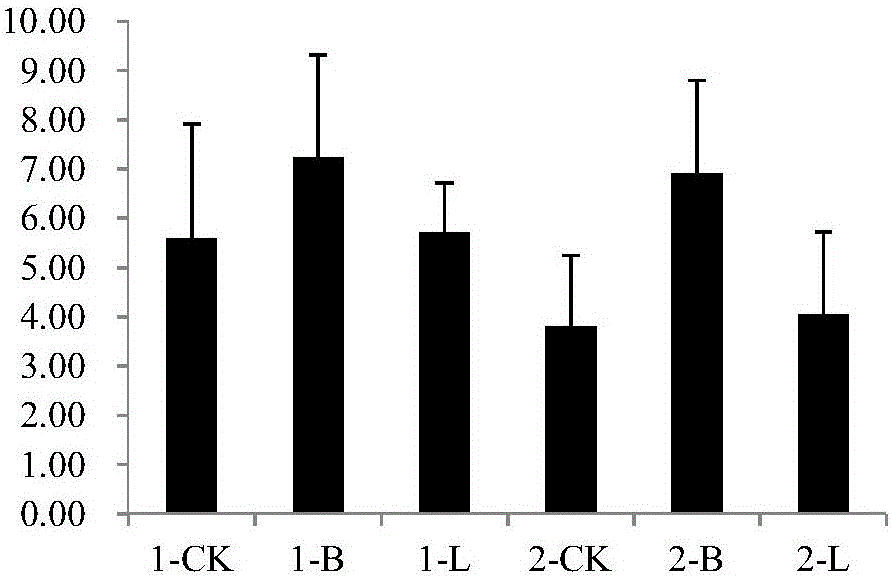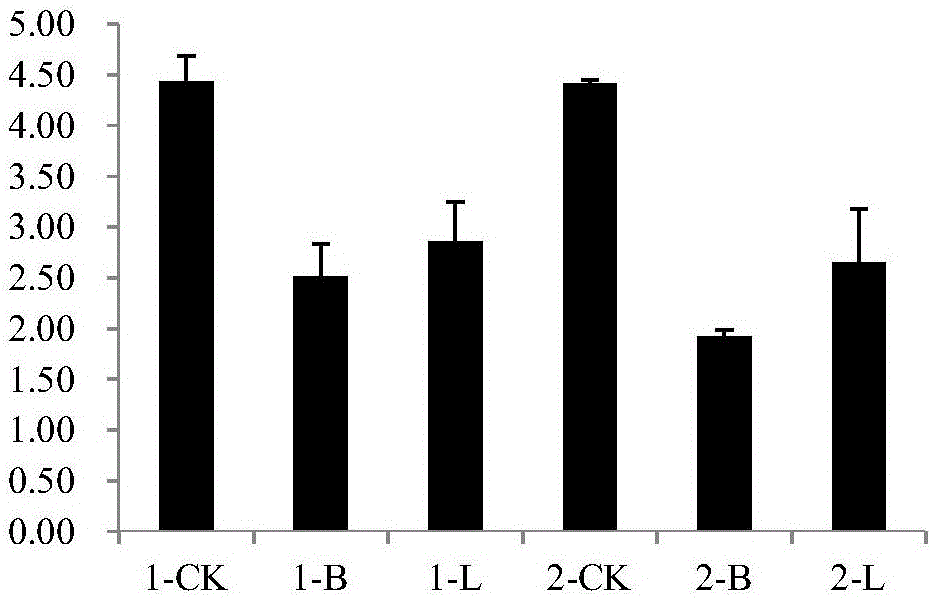Method for lowering heavy-metal lead-cadmium content of Ipomoea aquatica
A technology of heavy metals and water spinach, applied in the direction of fertilization methods, botanical equipment and methods, restoration of polluted soil, etc., to achieve the effects of low treatment costs, improved vegetable yield and quality, and easy production and implementation
- Summary
- Abstract
- Description
- Claims
- Application Information
AI Technical Summary
Problems solved by technology
Method used
Image
Examples
Embodiment 1
[0018] Embodiment 1: Biochar reduces the potted plant of water spinach lead and cadmium content
[0019] An improvement agent for reducing the risk of water spinach pollution in soil polluted by heavy metal lead and cadmium, prepared by the following process: after cutting the dried rice stalks into 15 cm small sections, put them in a vacuum box-type atmosphere furnace, and feed N 2 As a protective gas, the temperature was raised to 600°C at a rate of 10°C / min, and then carbonized at a constant temperature for 2 hours. After cooling to room temperature, the grinding particle size was biochar particles that passed through a 20-mesh sieve.
[0020] Soil lead and cadmium pollution levels are set at 400 mg·kg -1 and 5.0mg·kg -1 . Apply 6 grams of biochar particles per kilogram of soil to the entire base, and then turn it evenly to mix the biochar and the contaminated soil evenly. After 20 days of watering and balancing, it can be sown or transplanted. Two commercially available...
Embodiment 2
[0022] Embodiment 2: lime reduces the potted plant of water spinach lead and cadmium content
[0023] Lime is selected as analytically pure calcium hydroxide, in which Ca(OH) 2 Content ≥ 95.0%, hydrochloric acid insoluble matter ≤ 0.05%, chloride (Cl) ≤ 0.01%, sulfate (as SO 4 ≤ 0.2%, iron ≤ 0.01%, heavy metal (calculated as Pb) ≤ 0.002%, magnesium salt and alkali metal (MgO) ≤ 0.5%, precipitate in ammonium hydroxide ≤ 0.25%.
[0024] Soil lead and cadmium pollution levels are set at 400 mg·kg -1 and 5.0mg·kg -1 . Apply 6 grams of lime per kilogram of soil for the entire base application, and then turn it evenly to mix the lime and contaminated soil evenly. After 20 days of watering and balancing, it can be sown or transplanted. Two commercially available water spinach varieties, green stems and big-leaf spinach and Thai willow-leaf spinach, were selected. Select 30 healthy and uniform seeds from each water spinach variety to be tested and sow them into pots. When the see...
PUM
 Login to View More
Login to View More Abstract
Description
Claims
Application Information
 Login to View More
Login to View More - R&D
- Intellectual Property
- Life Sciences
- Materials
- Tech Scout
- Unparalleled Data Quality
- Higher Quality Content
- 60% Fewer Hallucinations
Browse by: Latest US Patents, China's latest patents, Technical Efficacy Thesaurus, Application Domain, Technology Topic, Popular Technical Reports.
© 2025 PatSnap. All rights reserved.Legal|Privacy policy|Modern Slavery Act Transparency Statement|Sitemap|About US| Contact US: help@patsnap.com



